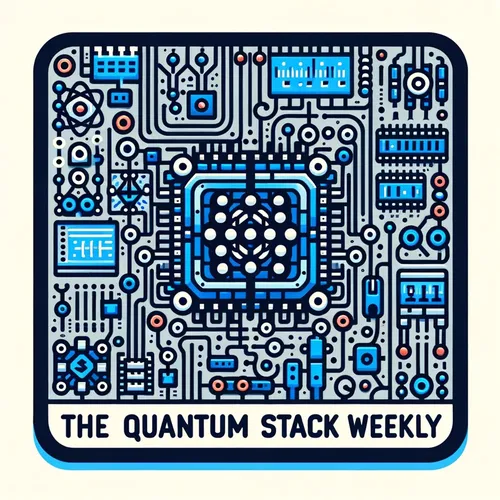Quantum Leaps: Fujitsu Unveils Enterprise-Ready Hybrid Computing Toolkit
- Author
- Quiet. Please
- Published
- Tue 29 Apr 2025
- Episode Link
- https://www.spreaker.com/episode/quantum-leaps-fujitsu-unveils-enterprise-ready-hybrid-computing-toolkit--65793509
This is your The Quantum Stack Weekly podcast.
Imagine this: It's Monday morning, the espresso machine’s hissing like a cloud chamber, and my inbox pings with electrifying news—a fresh quantum computing application has just been announced. Welcome back to The Quantum Stack Weekly. I’m Leo, your Learning Enhanced Operator, ready to entangle with the bleeding edge of computation, where the future materializes one qubit at a time.
Today's main narrative comes hot from Fujitsu’s Tokyo labs. Just this past week, Fujitsu officially announced the launch of a quantum application development environment tailor-made for enterprise use. This isn’t just another incremental upgrade—it’s an inflection point. Fujitsu is rolling out a suite allowing companies to deploy hybrid quantum-classical solutions, specifically targeting previously intractable optimization and simulation problems. But what’s the real breakthrough here? For the first time, enterprises outside the traditional research strongholds can co-design algorithms leveraging both quantum and classical resources—sidestepping the bottleneck of having to wait for full-scale, error-corrected quantum hardware. It's the quantum leap from theory to business-ready reality.
Let’s dig in. If you’ve ever tried to optimize a supply chain, schedule thousands of flights, or price complex financial derivatives, you’ll know classical computers choke on the combinatorial explosion. Quantum algorithms—think quantum annealing or the Quantum Approximate Optimization Algorithm—see that mountain of possibilities not as a blockade, but as a landscape they can traverse all at once, thanks to superposition and entanglement. When Fujitsu’s toolkit enables companies to encode these problems for simultaneous quantum-classical processing, it’s like handing them a map to previously unreachable peaks in the optimization landscape. Quantum Monte Carlo methods, for instance, are now accelerated, providing unprecedented accuracy and speed for risk assessments in finance—a point highlighted at the recent Quantum Computing Applications in Economics and Finance Conference at UPenn, where leaders like Jesús Fernández-Villaverde and Eric Ghysels are actively guiding the field.
Picture the scene inside a modern quantum lab: The air hums with sub-Kelvin refrigeration units, their chrome surfaces reflecting blue LED readouts. I can almost feel the frisson as quantum circuits—delicate arrays patterned with Josephson junctions—dance between states, orchestrated by microsecond pulses. To the uninitiated, it might resemble a sci-fi set, but for us, it’s where classical silicon meets shimmering quantum probability.
Now, why is this hybrid approach so important? Consider today’s world stage. As economists and technologists converge—like at that April conference at UPenn—they’re eyeing quantum’s ability to revolutionize dynamic economic modeling, cryptographic protocols, and real-time market risk analysis. A financial institution can now run quantum-enhanced simulations overnight, shrinking what used to take months into mere hours. Imagine central banks modeling shocks and tail risks—not as hypothetical exercises, but as living data streams, making our global financial system more resilient.
Part of what excites me most is this technology’s democratization effect. Until now, quantum’s potential was largely locked in academic silos or deep-tech startups. Now, companies from logistics giants to hedge funds can access APIs that abstract away the quantum weirdness—think of it as using a superpower in a spreadsheet. I see a parallel with the way AI went mainstream: first cloaked in esoteric mathematics, then delivered as developer-friendly tools. Quantum is following the same trajectory, only faster.
One technical highlight that’s getting the community talking? The ability to dynamically allocate workloads between classical and quantum processors...
